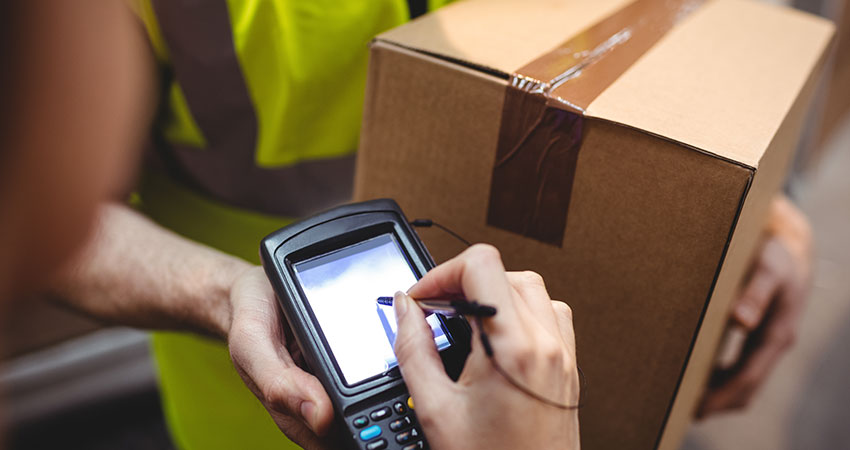There is a long list of reasons why ecommerce shoppers abandon their carts at checkout, and the cost of shipping sits firmly at the top. Thanks to Amazon and friends, consumers are entirely averse to paying for shipping. Even the most intent shoppers often waver when shipping costs are factored into their total at checkout.
To reduce cart abandonment, online retailers need to make shipping less of a purchase barrier. The key to doing that? Offering appealing options at checkout.
As much as ecommerce sellers want every shopper that loads up their cart to complete a purchase, the reality is that some simply won’t. However, many shoppers that vanish at the sight of added shipping fees will in fact hit the “buy” button IF they are given more control over how they receive their order and how much it costs to have their purchase shipped.
The Cost Conundrum
The link between shipping costs and cart abandonment is obvious. A recent report that analyzed 3 million online checkout sessions and 1.5 million conversions confirmed, without any doubt, that there is a direct relationship between shipping costs and conversions: Sales conversions drop when the cost of shipping increases. E-commerce retailers that closely track cart abandonment have likely seen this trend in their own data.
A practical way for brands to understand their consumers’ comfort level with shipping costs is to run A/B tests. One strategy is to choose a shipping offer to test for a week, then test a reduced rate the following week. Alternate weeks and compare how higher vs. lower (or free) shipping rates impact site visitors, cart abandonment rates, gross margins, and more. Another strategy is to offer a reduced shipping rate every other day for two weeks. The results should be similar.
A/B testing offers insights about customers’ buying habits and acceptance of shipping costs. Those insights show what the majority of customers are comfortable paying. Of course, each shopper is different and will tolerate different fees. One shopper may be willing to pay $9.99 to have an apparel item shipped, while another shopper making the same purchase may abandon their cart if asked to pay $6.99 for shipping. Even after conducting A/B tests and analyzing results, brands should offer a variety of shipping options at different price points to help convert more outliers.
Every Shopper, Every Transaction
It is important to keep in mind that the circumstances behind every online purchase are unique, and so are consumers’ shipping preferences for each purchase. For shoppers, choice can be what drives conversions.
A shopper buying a special gift for an upcoming occasion might be concerned about whether the gift will arrive on time — so they are willing to pay more to get their order sooner. Another shopper making a small purchase might care most about keeping the cost of shipping to a minimum — so it doesn’t rival the price of the item purchased. And someone buying a signature required item, such as wine, may want the ability to have their order shipped to a store to prevent a missed delivery at home. The point is, shipping preferences vary from one shopper to the next, AND a single shopper’s priorities can change with each purchase. With this in mind, retailers need to think about how they can offer every shopper their preferred shipping option for every transaction.
The obvious challenge is that there is no definitive way to know what is driving each shopper’s behavior. Even repeat customers may not want the same delivery method they chose last time they made a purchase. For this reason, online retailers need to offer a variety of shipping options to appeal to a wide range of preferences and convert more sales.
Options Beyond Home Delivery
The good news is that more shipping options are available today than in the past. Prior to the pandemic, the only “choice” shoppers had when it came to delivery was usually standard, two-day, or next-day home delivery. The pandemic popularized other offerings such as curbside and in-store pickup.
Even pure play e-commerce merchants without brick-and-mortar locations are able to provide hybrid shipping and pickup options via BOPA, which stands for buy online, pickup anywhere. This order fulfillment method enables shoppers to choose a nearby commercial location that they want their order shipped to and allows them to save money by picking up their delivery. BOPA can save shoppers around 30% on the cost of shipping on average.
Offering BOPA and multiple other shipping options makes it more likely that consumers will see a shipping option that fits what they want. For example, a shopper who is presented the following at checkout can pick what is most important in that moment (saving money, speed, etc.):
- Pick-up nearby: Walgreens (distance from home address: 0.3 miles) — $5.99
- Pick-up nearby: CVS (distance from home address: 1.2 miles) — $5.99
- USPS Priority Mail 2-Day — $9.99
- UPS Ground — $14.99
- UPS 3 Day Select — $20.10
- UPS Next Day Air Saver — $42.08
Eccommerce merchants know that shipping fees are a top driver of shopping cart abandonment. Those who work to minimize the cost barrier by offering multiple attractive shipping options have a better chance of converting shoppers into customers.
Mitchell Nikitin is the founder and CEO of Via.Delivery

